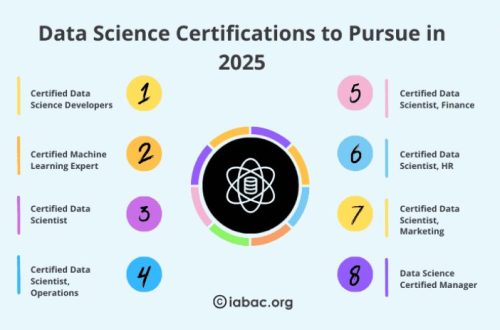Ever wondered what really goes on behind the scenes in the printing industry? It’s so much more than just pushing a button and watching paper come out with ink on it. From the initial design concepts to the final product landing in your hands, the printing process is a complex and fascinating journey. Let’s pull back the curtain and explore the intricacies of this often-overlooked world. Are you ready to dive in?
Understanding the Different Types of Printing
The printing industry isn’t a monolith; it encompasses a wide range of techniques, each suited for different projects and budgets. Understanding these different types of printing is crucial for anyone involved, whether you’re a designer, a business owner, or simply curious.
Offset Lithography: The Workhorse of the Printing Industry
Offset lithography is the most common printing technique for high-volume projects. Think magazines, brochures, and newspapers. It involves transferring an image from a plate to a rubber blanket, then to the printing surface. This indirect method allows for consistent quality and sharp details, even on textured paper.
Digital Printing: Quick and Convenient
Digital printing, on the other hand, is ideal for smaller print runs and personalized projects. No printing plates are needed; the image is directly transferred from a digital file to the paper. This makes it faster and more cost-effective for short-run jobs like business cards, flyers, and personalized mailers.
Tip: Consider digital printing for short runs or projects with variable data (like personalized names and addresses). It can save you time and money!
Other Printing Methods: A Diverse Landscape
Beyond offset and digital, there are several other printing methods, each with its own unique characteristics:
- Flexography: Commonly used for packaging and labels.
- Screen Printing: Ideal for printing on textiles, ceramics, and other non-paper materials.
- Gravure Printing: Used for high-volume, high-quality printing, such as magazines and catalogs.
The Importance of Prepress in the Printing Industry
Prepress is the crucial stage before the actual printing begins. It involves preparing the digital files, proofing the design, and creating the printing plates (if needed). A mistake in the prepress stage can lead to costly errors and delays, so attention to detail is paramount.
Color Management: Ensuring Accurate Colors in the Printing Industry
Color management is a critical aspect of prepress. It involves ensuring that the colors in the digital file accurately match the colors in the final printed product. This requires calibrating monitors, profiling printers, and using color management systems to maintain consistency across different devices.
Proofing: Catching Errors Before They Happen
Proofing is the process of reviewing a sample print before the entire job is run. This allows you to catch any errors in the design, layout, or color. There are different types of proofs, including soft proofs (viewed on a monitor) and hard proofs (printed on paper). Always, always, always proof your work!
Interesting Fact: Did you know that the human eye can distinguish millions of different colors? Accurate color management is essential to capture the nuances of color in print.
Sustainability in the Printing Industry
In today’s world, sustainability is a major concern for all industries, and the printing industry is no exception. There’s a growing demand for eco-friendly printing practices and materials. What steps are being taken to make printing more sustainable?
Eco-Friendly Inks and Papers: Reducing the Environmental Impact of the Printing Industry
One of the key ways to make printing more sustainable is to use eco-friendly inks and papers. Soy-based inks, for example, are a renewable resource and release fewer volatile organic compounds (VOCs) into the atmosphere than traditional petroleum-based inks. Recycled paper is another great option, reducing the demand for virgin wood pulp.
Reducing Waste: Minimizing the Environmental Footprint of the Printing Industry
Reducing waste is another important aspect of sustainable printing. This can involve optimizing print layouts to minimize paper waste, recycling scrap paper, and using energy-efficient equipment. Every little bit helps!
- Use recycled paper whenever possible.
- Choose soy-based or other eco-friendly inks.
- Optimize print layouts to minimize waste.
- Recycle all scrap paper.
- Use energy-efficient printing equipment.
The Future of the Printing Industry
The printing industry is constantly evolving, adapting to new technologies and changing consumer demands. What does the future hold for this dynamic industry?
Personalized Printing: Tailoring Products to Individual Needs
Personalized printing is becoming increasingly popular. Thanks to digital printing technology, it’s now easier than ever to create customized products, such as personalized books, calendars, and marketing materials. This trend is expected to continue as consumers demand more unique and tailored experiences.
Integration with Digital Media: Bridging the Gap Between Print and Online
The printing industry is also integrating more closely with digital media. QR codes, augmented reality, and other technologies are being used to connect print materials with online content, creating a more engaging and interactive experience for the reader. The line between print and digital is blurring, and that’s exciting!
FAQ About the Printing Industry
What is the difference between CMYK and RGB?
CMYK (Cyan, Magenta, Yellow, Key/Black) is a color model used for printing, while RGB (Red, Green, Blue) is used for digital displays. When designing for print, it’s important to use CMYK to ensure accurate color reproduction.
What is DPI and why is it important?
DPI (dots per inch) refers to the resolution of an image. Higher DPI means more detail and sharper images. For print, a DPI of 300 is generally recommended for optimal quality.
What is bleed?
Bleed refers to the extra area around the edges of a design that extends beyond the trim line. This ensures that the image extends all the way to the edge of the printed piece after it’s trimmed.
So, there you have it – a glimpse into the fascinating world of the printing industry. It’s a complex and ever-changing field, but one that plays a vital role in our lives. From the books we read to the packaging on our food, print is all around us. The industry continues to innovate, embracing new technologies and sustainable practices. It’s an exciting time to be involved in printing. And who knows what the future holds?



